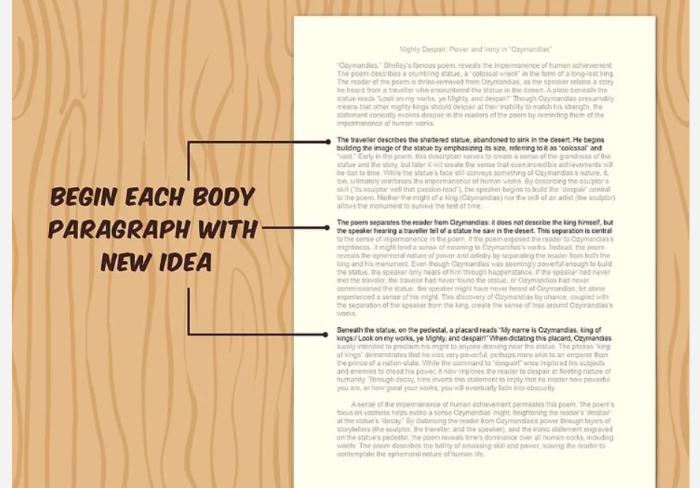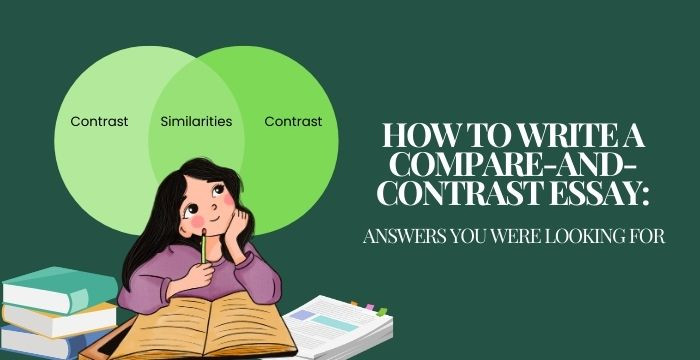
At the basic level, the academic essay's structure helps provide a logical, clear, and reasoned argument in response to any specific question. Although structuring the argument can sometimes be a difficult task, however, in reality, it is a very simple task. The essay can be created on the core theme, where the writer can plan the order and how you present your ideas. The first and foremost step is to decide the writing process that suits you the best and plan accordingly. A good essay can only be written when you decide on the most effective process that specifies its needs. The writing process of an essay paragraph is different for different people and it depends on the individual.
Structure Academic Paragraph
Every piece of academic writing consists of paragraphs and headings. The total number of paragraphs and the length of the paragraph depends on the topic. However, every paragraph should contain the following elements:
- Unified: All the sentences should connect to one central theme or idea.
- Coherent: The sentences should be logically organized and connected clearly.
- Relevant: The paragraphs should support the overall theme and aims of the paper.
Step 1: Identify the purpose of the paragraph
First, it is important to have a central idea that will help in organizing the paragraph. In case you have an outline of the overall structure of the paper, you must have a good idea of each paragraph and its aims. You can start creating the paragraph by drafting a sentence that sums up the main point and introduces the focus of the paragraph. This is also known as the topic sentence of the paragraph. The topic sentence should be specific enough to cover the entire paragraph however it should also be general enough to develop a few more sentences from it.
The topic sentence should:
- Transitions from the previous paragraph.
- Identify the focus of the paragraph
- Should be related to the overall thesis or essay
- Provide a place for analysis and evidence
Step 2: Highlight the importance of the paragraph
The topic sentence provides the readers with the relevancy of the paragraph and why the information provided is important for the overall argument made in the essay. If the topic sentence needs clarification, the writer can expand its meaning in the paragraph. This improves the overall structure of the paragraph.
The sentence expands the topic and shows how it is adjusted to the boarder arguments made in the essay.
Step 3: Give evidence
After highlighting the importance of the paragraph it is important to support the point with arguments and examples. Evidence always does not mean empirical facts, although which forms the facts will take depends on the topic, discipline, and approach of the essay. Some of the common evidences used in the essay are
- Different types of quotations from various literary texts, interviews, and other primary sources of information.
- Paraphrases, summaries, or quoting the secondary source that provides relevant information in support of the point.
- Quantitative or qualitative data collected or identified in the existing research.
- Providing descriptive examples of music or artistic works, first-hand experiences, and events.
It is important to note that the sources are cited equally.
Step 4: Interpret or explain the evidence
This is the time when you show the reader how the evidence adds meaning to your point. How you highlight the importance of the evidence depends on the type of evidence used in the paragraph.
- For instance, if quoting a passage, provide the interpretation of the quotation.
- In case, you are citing statistics. Make the readers understand how it adds to your argument.
- In case you are using a reference of any secondary information source, show how it creates the idea of the paragraph.
Steps 3 and 4 can be repeated many times, till the main point of the paragraph is fully developed. Make use of transition phrases and words, to highlight the connection between various sentences in the paragraph. They play an important role in creating a strong paragraph in the essay.
Step 5: Conclude the paragraph
Finally, conclude the paragraph by returning to the main statement and highlighting the overall consequences of the facts and evidence you have explored.
Step 6: Proofread the whole paragraph
After you have completely developed the point of the paragraph, read the final result, to make sure that sentences follow each other smoothly and logically to make the last and connect to the overall whole paragraph.

Crafting good and strong body paragraphs
Time to start a new paragraph
As you create a new idea, issue, or argument, it is important to start a new paragraph. To decide whether your paragraph is complete, ask the following questions to yourself.
- Do all the sentences relate to the topic sentence?
- Does each sentence in the paragraph make a logical sense about the previous sentence?
- Have you provided enough evidence to support your point or argument?
- Is the evidence clear and showcases the reasons why they have been used in the paragraph?
- Does all the evidence fit with each other and portray a coherent story?
One of the most important tips when creating a strong paragraph in the essay is don't think of the paragraphs as isolated units, and consider them as part of a large argument, that should flow organically from one point to another point. Also before starting the paragraph, decide how you will make transitions between ideas. This is important as it helps in creating a strong paragraph in the essay.
Conclusion
The introduction paragraph and the conclusion paragraph also look different from each other. The only universal rule when creating paragraphs in the essay is that they should be coherent, unified, and relevant. In case you struggle in structuring a strong paragraph then you take help of the paper editing services such as “The Assignment Ninjas” for input and personal feedback.


